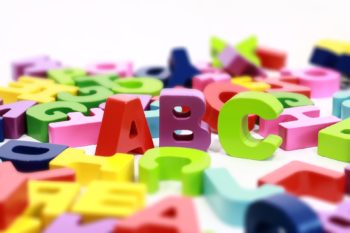Languages People Use in Vietnam Posted by Kandle Dart on Feb 15, 2021 in Culture, History, Vocabulary
You can easily guess the most common spoken and written language in Vietnam. Yes, It is tiếng Việt or Việt Ngữ (Vietnamese)! Tiếng Việt is both the national and official language of Vietnam. It’s the majority language used to communicate by over 90 million Vietnamese in Vietnam, along with more than 4 million Vietnamese living overseas. Tiếng Việt is the native language of the Kinh people, the majority ethnicity in Vietnam. It is also the second language of other ethnic minority groups in Vietnam, and the second generation of Vietnamese abroad.
You may wonder how tiếng Việt originated. It is hard to trace it, because through centuries it was influenced by a number of other languages such as Chinese, Muong, Thai, Khmer, and others. Basically, tiếng Việt belongs to the Mon-Khmer languages in the Austro-Asiatic family. It is monosyllabic and incorporates tonal language. There are many dialects in Vietnam, but the most common are the Northern, Central, and Southern.
Historically, chữ Nôm (Vietnamese ideographs) was considered the Vietnamese written language. It was a Vietnamese invented script modeled after classical Chinese ideographic structure. It was widely used between the 15th-19th centuries by Vietnamese elites to compose their literary works. For thousands of years, however, until the early 20th century, chữ Hán (Chinese ideographs) were used in formal writing for official purposes, except for a brief period under the Ho dynasty (1400-1407) and Tay Son dynasty (1778-1802).
The current national written language uses chữ Quốc Ngữ (the Vietnamese alphabet). Chữ Quốc Ngữ was based on Romance Latin languages, in particular, the Portuguese alphabet, with the addition of nine accent marks – four to create sounds and five to indicate tone. Francisco de Pina, Gaspar d’Amaral, Antonio Barbosa, Cristoforo Borri, and Alexandre de Rhodes were among the first people who advanced the Romanizing of the Vietnamese alphabet. Vietnamese consider Alexandre de Rhodes (1591-1660), an Avignonese Jesuit missionary and lexicographer, who spent six years in Vietnam as a Catholic missionary (1624-1630) as the “father” of Chữ Quốc Ngữ, due to his publication of the first Vietnamese Catechist and the first Vietnamese-Latin-Portuguese dictionary (Rome, 1651). It marked the birth of chữ Quốc Ngữ. In 1879, the French colonial administration of Vietnam proclaimed that chữ Quốc Ngữ would replace chữ Hán in official documents, but enforcement of the change was not enacted until 1910. In 1918 Emperor Khải Định abolished the traditional chữ Hán writing system in the public education system. This organized a new educational system teaching tiếng Việt as a first language to students and tiếng Pháp (French) as a second language using chữ Quốc Ngữ in primary schools.
Although tiếng Việt is an official language and used by 90% of the Vietnamese population, there are fifty-four other recognized ethnic groups in Vietnam. Hence, there are many minority languages that are spoken by the minority groups in Vietnam including:
- Tieng Hoa (Chinese), spoken by the Hoa group (Chinese) across the country, mostly in southern Vietnam
- Tày, spoken by the Tày group in northeast Vietnam near the China border
- Mường, spoken by the Mường group in the northern mountainous regions
- H’Mông, spoken by the Hmong group in the highlands
- Nùng, spoken by the Nùng group, mostly in the northern part of Vietnam, near the China border
- Cham, spoken by the Cham group. Cham was the language of the old Champa kingdom located in central Vietnam.
- Khmer, spoken by the Mon-Khmer group in southwest Vietnam
The primary foreign languages taught in Vietnamese schools today include English, French, Chinese, and Russian. These days, English is the most common second language and is widely taught to the younger generation. French was the common second language for the older generation, since Vietnam was part of the French Indochina colony. Due to business investments and commercial trade in Vietnam from Taiwan, Korea, and Japan, study of Chinese, Korean, and Japanese are also on the rise.

Build vocabulary, practice pronunciation, and more with Transparent Language Online. Available anytime, anywhere, on any device.






